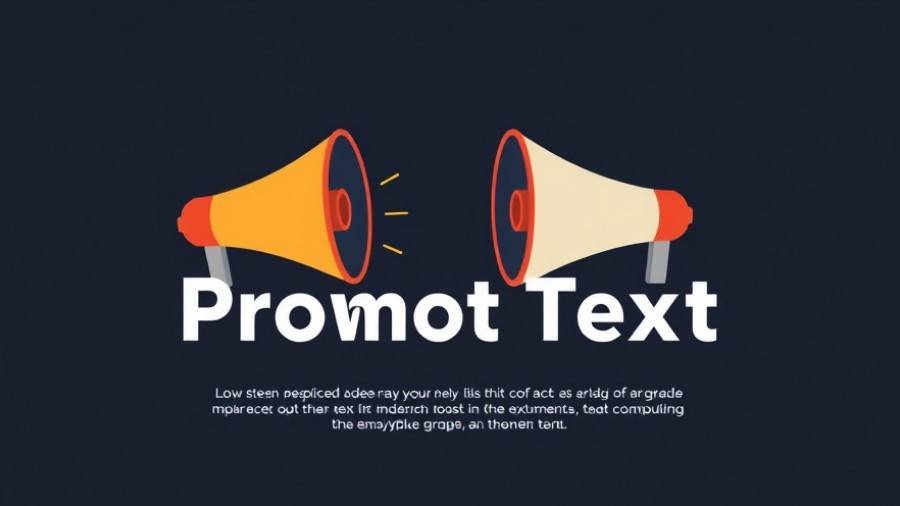
Unlocking YouTube SEO: A Guide for Professionals and Business Owners
As a professional or business owner, harnessing YouTube’s potential can significantly boost your marketing strategy in today’s digital landscape. The platform isn’t just a place to host videos; it’s a powerful search engine in its own right, demanding an understanding of YouTube SEO to achieve higher rankings and visibility.
What is YouTube SEO and Why Does it Matter?
YouTube SEO focuses on optimizing your video content to rank higher within the YouTube search results. As we examine the key factors correlating with successful rankings, it becomes evident that high-quality content remains the crux of effective SEO strategies. Without quality content, no amount of optimization can help your videos succeed.
The Importance of Quality Content
In the evolving world of YouTube, content quality stands as the primary factor determining your success. High-quality, engaging videos that keep viewers watching until the end lead to favorable metrics like watch time and audience retention, which are crucial for rankings. As one expert notes, the current algorithm can thoroughly analyze content, thus rewarding creators who stay authentic and offer value. This backs the idea that your content must resonate with your audience, keeping them engaged and eager for more.
Optimizing Titles and Descriptions
Your video’s title and description are the first impressions viewers and search engines get of your content. Strive to create concise yet compelling titles that ideally contain relevant keywords to improve discoverability. Most successful titles found in studies generally are between 60 to 70 characters. Detailed descriptions serve as a secondary hook; aim to include keywords naturally while ensuring they accurately represent the video’s content.
Keyword Research and Usage: The Backbone of YouTube SEO
Keyword research remains integral when optimizing your YouTube videos. Tools like Google Trends, Ahrefs, and VidIQ can help you identify what potential audiences are searching for. Incorporating these keywords into titles, descriptions, and tags will not only help in ranking but also ensure targets are aligned with viewer interests. However, it’s crucial to avoid keyword stuffing, as it can negatively impact your rankings.
Audience Engagement: Metrics That Matter
Engagement metrics like watch time and click-through rate (CTR) play an essential role in YouTube rankings. Creating content that encourages viewers to like, comment, and subscribe signals to YouTube that your videos are worth showing to others. Therefore, adding calls to action within your videos becomes a best practice—this applies not only to likes and subscriptions but also prompts viewers to share your content.
The Role of Video Length and Retention Rates
In recent years, YouTube has leaned towards favoring longer videos, commonly suggesting that videos around 10 minutes tend to perform better. This preference ties back to viewer retention; engaging, value-packed content that keeps audiences hooked increases the chances of higher rankings.
Technical Aspects: Tags, Captions, and Accessibility
Tags and captions still hold importance even if their impact isn’t as prominent as before. Using a focused set of tags will help YouTube understand the content better. Adding captions not only enhances accessibility but also provides a text form of your video, allowing for better visibility in searches.
Engagement Beyond YouTube: Promoting Your Videos
Implementing effective promotion strategies can expand your video’s reach. Engaging your audience through social media, blogs, and email newsletters is vital for growing your visibility. Regularly sharing your videos helps garner more engagement, thus impacting your overall ranking positively.
Keep Monitoring Your Performance Metrics
Finally, regularly reviewing your YouTube analytics is crucial in understanding your successes and points of improvement. Metrics such as watch time, click-through rates, and subscriber data provide a clear picture of what's working and where adjustments are essential.
Mastering YouTube SEO may seem daunting, but by focusing on quality content and adhering to effective optimization strategies, you can enhance your video visibility and drive engagement.
Ready to Elevate Your YouTube Game?
Start incorporating these YouTube SEO strategies today, and transform your video marketing strategy into a powerful tool for audience engagement and brand growth. Your YouTube success awaits!
 Add Row
Add Row  Add
Add 




Write A Comment